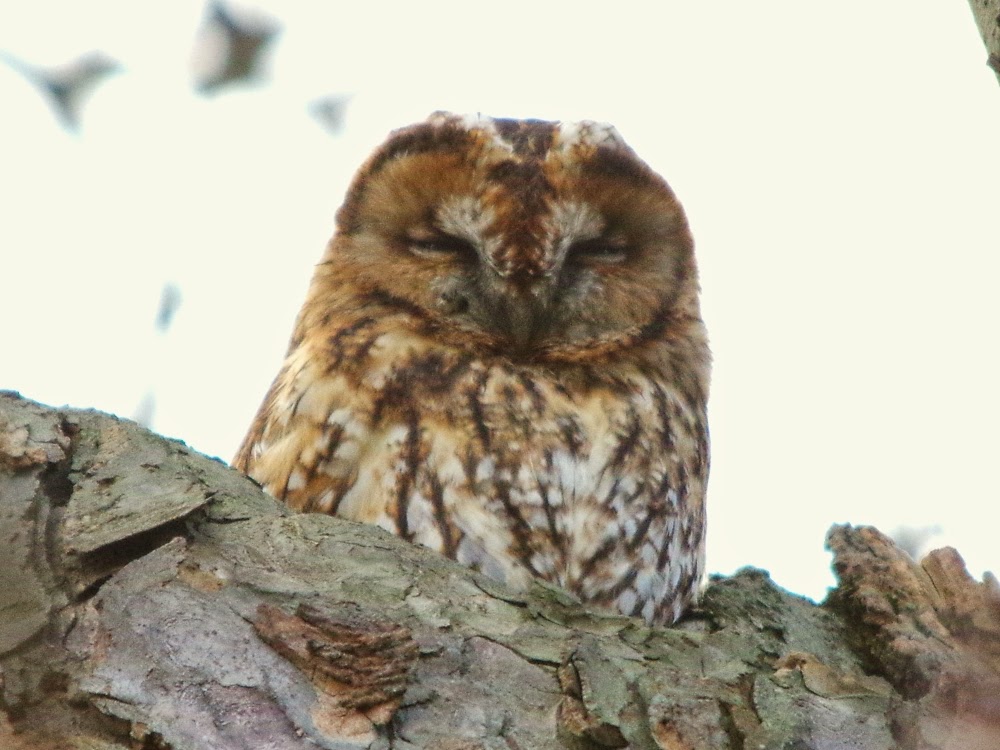There was better luck with finding the Scaup today. He was halfway along the reed bed in front of the Diana fountain, allowing a long shot from the landing stage. His appearance has changed noticeably since the last photograph on 14 February: his sides are almost pure white and the patterned area on his back has spread almost to its fullest extent.
When I passed this place again two hours later, he was nowhere to be seen.
I also managed to hear the Cetti's Warbler singing and to get a very brief glimpse of it, not long enough for a picture. On the west side of the Long Water, about 80 yards north of the bridge, there is a very broken horse chestnut tree most of which collapsed a couple of years ago. Just to the north of this is a line of three holly trees. The bird was in the middle one, invisible among the leaves until it dashed into a bramble patch.
The second-winter Great Black-Backed Gull was again on the Long Water near Peter Pan. Here it is in front of a Herring Gull of the same age. Apart from its larger size, its broad flat head, thick neck and very heavy bill make it recognisable.
On the Serpentine a young Lesser Black-Backed Gull was playing with a bit of wood, flying up, dropping it in the water and diving to catch it.
Most of the young gulls of this size in the park are Herring Gulls, because there is a breeding colony of them near Paddington Station. However, young Herring Gulls have pale tips to their inner primaries, and Lesser Black-Backs have dark tips all along.
A Mandarin drake was mooching around near the Vista. I didn't see his mate.
On the grassy bank near the Italian Garden a pair of Mallards were wandering around looking for a nest site. There are plenty of bushes for them to choose, and most of them are so thick with brambles that they might make a fox think twice before trying to raid their nest.
This is the Coal Tit that comes to feed from my hand beside the Rima relief. Usually it hides inside the yew hedge and calls to me when it sees me, then emerges cautiously, takes a pine nut and dives back into the hedge.
In the scrub between here and the road there is a colony of Wrens, which has been there for many years. Usually they flee at my approach, but this one was busy looking for insects and stood its ground.
The male Tawny Owl didn't come out of his tree till four o'clock.








No comments:
Post a Comment